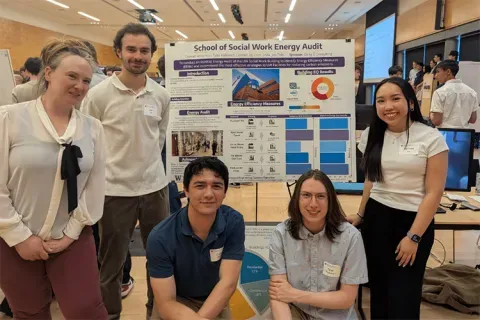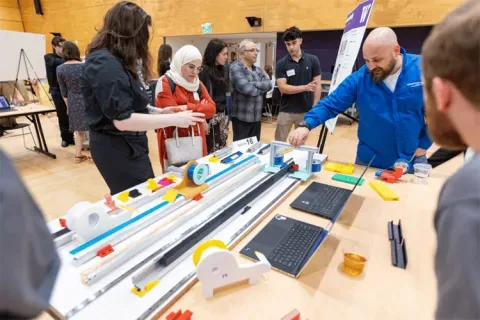Boeing
Light - Quantum Emitter Interaction Modeling
This student team worked to analyze the fundamentals of light interaction with a quantum emitter in support of quantum sensing, communication and electronics control design concepts under consideration at Boeing. The students worked to define, model and solve increasingly complex and physically accurate quantum mechanical systems relevant to these technological areas. The Project Mentor provided initial models and propose solution methodologies, and the students worked to seek alternative methods and additional topics of interest to apply to problem solving. Motivations of this project were to: (1) advance existing and (2) seek alternative modeling and solution methods to apply to Boeing's quantum projects; (3) encourage potential future Boeing employees to develop quantum technological, mathematical and computational skills. This student team began the project with analysis of the Jaynes-Cummings model, which in its simplest form describes the interaction of a single photon mode (plane wave) with a two-energy level quantum emitter (such as an atom). One example of interest to Boeing was Photon Addition, where an excited emitter transitions from its higher energy level to lower energy level while interacting with an incident "signal" photon, thus emitting an additional photon that may carry some of the characteristics of the incident photon, thus amplifying the signal, improving its detection and measure, and increasing its signal-to-noise ratio in a quasi-noiseless manner surpassing classical statistics. The quantum system would then be incrementally expanded to include multiple photon modes interacting with one or more physically realizable emitters with multiple energy level transitions. As later stage of the project, the student team worked to expand to interaction with entangled photons and analysis and solution of the Master's Equation, which describes the aforementioned light-emitter interaction as well as interaction with the environment and inclusion of even more physical realism of the quantum emitter characteristics and performance, relevant to existing or potential quantum emitters under development. Examples of quantum emitters that the student team considered to be physically characterized in the models include: trapped atoms, solid state emitters such as Nitrogen vacancy centers and hexagonal Boron Nitride, and quantum dots. The student team worked to develop analytical and numerical techniques to efficiently solve these systems, and worked to evaluate performance of the models through simulation of physical measurements as they relate to examination of spontaneous vs. stimulated emission, increase in signal-to-noise ratio, and amplification of information encoded in the photon signal (such as polarization, phase, etc.) A desired outcome this student team worked toward was to develop efficient numerical methodologies to model and evaluate the performance of light-emitter interaction design concepts. The student team worked to use the models, with increasingly complex systems of multiple photon modes and multiple energy level emitters, to compare and differentiate various quantum emitter systems and evaluate their performance in increasing the sensitivity of photon signal detection and measurement, increasing range and resolution of quantum imaging systems, evaluating quantum communication concepts. The student team worked to deliver reports and presentations of the incrementally complex light-matter interaction models and their solutions, analytical and numerical algorithms for solving the models, and suggestions for future advancement of these techniques that could lead to additional research projects.
Faculty Adviser(s)
Sara Mouradian, Electrical & Computer Engineering
Brant Bowers, Electrical & Computer Engineering
Related News

Mon, 10/13/2025 | UW Mechanical Engineering
Capstone collaboration leads to award
An ME capstone team received first place for its energy audit of the UW School of Social Work building.

Thu, 07/17/2025
UW engineering students develop smart ballot solution
UW engineering students develop smart technology solution to improve ballot collection for Snohomish County.

Mon, 07/07/2025 | UW Mechanical Engineering
Capstone creations
Students displayed innovative capstone design projects at the 2025 expo.

Fri, 09/20/2024 | UW Civil & Environmental Engineering
Smarter irrigation for a greener UW
A new project combines satellite data with ground sensors to conserve water and create a more sustainable campus environment.